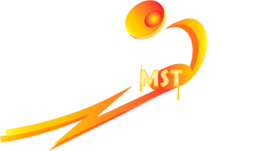You ever had that feeling that you were just “a tick off” when performing your sport (or anything else for that matter)? You too huh? Some days, I go out and shoot, and simply can’t miss. The very next day, I go out and shoot the exact same targets and can’t seem to run a station! Targets that I smashed the day before make it to the ground unscathed! How can this be? Why do we go from “first” to “worst” in a matter of days? One possible answer might lie in our heart rate variability (HRV for short).
If you are not familiar with HRV, my friends at Web MD tell us that it is “a measure of how much your heartbeat varies over time. A higher HRV is associated with better health and well-being, as it reflects the ability of your parasympathetic nervous system to regulate your heart rate and cope with stress”. It is a measure of how much difference there is between successive heart beats (measured in milliseconds) – not to be confused with your actual heart rate. So, let’s say your heart is beating at 60 beats / minute or one time a second, your HRV would be how much variation there is in that one second between each heartbeat measured in milliseconds – so one beat might be 1.01 seconds between beats, and the next could be 0.95 seconds.. It indicates how well your autonomic nervous system (ANS) is fine tuning it’s performance!
The ANS takes care of all of our bodily functions that we don’t generally think about such as breathing, blood pressure, digesting, and preparing to respond to threats. It is composed of two branches, the parasympathetic nervous system responsible for relaxation and recovery, and the sympathetic nervous system responsible for our “flight or fight” responses”. HRV then, tells us how well these two systems are balanced (higher means the scales tip towards the parasympathetic side while lower tips to the more stressful sympathetic side).
So why do I bring all of this up? Well, a year or so ago, I started subscribing to “fitbit premium” – an enhanced service from fitbit that provides additional details on a user’s performance. One of the enhancements included in this package is a measure of HRV. I really didn’t pay much attention to it until a few months ago when I noticed a relationship developing between the trends in my HRV and my shooting performance.
Fitbit calculates a HRV score each night by assessing the heart rate data during the longest sleep period of that night. As you can see in the following chart, my HRV peaked to a high of 47 on Saturday – coincidentally, that Saturday (8/19), I had my best tournament performance for the year (that was also one on my highest HRV readings of the year)! Note that the next day, my HRV dropped significantly (if my theory holds up, I am glad I shot on Saturday and not on Sunday!).

In contrast, check out this chart from the app:

My HRV plummeted between Friday and Saturday from 47ms to 34ms. Guess what else also plummeted? My shooting scores at the circuit shoot that Saturday at Dewitt’s!
Was this just a coincidence? Perhaps, but checking other scores (both HRV and shooting scores) seemed to indicate a pattern… Now I was like a dog with a bone…
A quick check on the internet using Bing’s artificial intelligence tool revealed what I was starting to suspect. There seems to be a strong relationship between HRV and eye-hand coordination based on studies that have been published! That could help to explain why my shooting scores improve when my HRV raises (and the converse). But I wanted a way to test this theory with something other than my shooting scores. Several years ago, I tried using reaction ball training. The reaction balls I have are the size of a tennis ball – only they have 10 flats on the surface.

When you bounce the ball, it may deflect in an unexpected direction depending on how it lands. One of the exercises involved bouncing two balls alternating the left and right hand. A timer is set for one minute and the goal is to bounce and catch the balls as many times as possible during the one-minute period.
This is an excellent test of eye-hand coordination. I am still collecting data daily, but this chart based on data I have to date, suggests a pretty good correlation between my HRV score and my ability to perform the test!

So, it would seem that my shooting performance could very well be influenced by my HRV on a given day. The next question is what does one do with this? what factors impact HRV? How can one improve their HRV?
Stay tuned for part 2!
For those who might what to try reaction ball training, you can purchase ones similar to those I use on Amazon at the following link:
QBall reaction balls on amazon
You can also learn more about them at the company’s website here:
